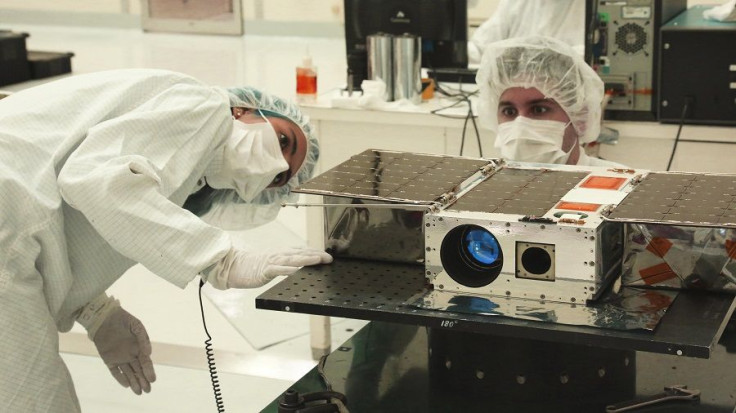Briefcase-Sized ASTERIA Breaks Record For Smallest Satellite To Spot An Exoplanet
KEY POINTS
- The CubeSat ASTERIA is roughly the size of a small briefcase
- A recent study described how ASTERIA broke the record for the smallest satellite to detect an exoplanet
- This mission showed how small satellites can also perform complex tasks
A briefcase-sized satellite from NASA's Jet Propulsion Laboratory (JPL) broke the record for the smallest spacecraft to detect an exoplanet.
Arcsecond Space Telescope Enabling Research In Astrophysics (ASTERIA) is a CubeSat space telescope about the size of a briefcase at 10 cm x 20 cm x 30 cm and weighs 10 kilograms (22.04 pounds). It was mainly a technology demonstration not meant for science tasks. However, in a study that will be published in the Astronomical Journal, ASTERIA showed just how much a tiny satellite can do by detecting exoplanet 55 Cancri e, and showed how valuable the small spacecraft can be.
Launched in August 2017 and deployed from the International Space Station months later in November, ASTERIA conducted what researchers called "opportunistic" observations, including that of the exoplanet, during its prime mission from November 2017 to February 2018 and also during the first extended mission from March to May 2018.

ASTERIA detected 55 Cancri e using the transit method. Scientists adopted the method to spot planets by looking for the dips in the brightness of a star. ASTERIA did the same by demonstrating fine pointing control, the ability to stay steady and focusing on a specific object for an extended time period.
To do this, the spacecraft must remain steady and focused on the star for a lengthy period of time because any vibrations or movements may lead to "jiggles" that may be misinterpreted as dips in brightness.
"This is the first detection of an exoplanet transit by a CubeSat," the authors wrote. "The successful detection of super-Earth 55 Cancri e demonstrates that small, inexpensive spacecraft can deliver high-precision photometric measurements."

To be clear, scientists already knew of 55 Cancri e's location. The intention of the mission with ASTERIA was to see whether it can perform fine pointing control, which it did. The feat is even more impressive since 55 Cancri e only blocks 0.04% of its parent star's light, thus making it a tough target.
The exoplanet was also detected by the Canadian Space Agency's Microvariability and Oscillations of Stars (MOST) satellite in 2011. MOST is six times larger than ASTERIA, but is still considered "incredibly small" for an astrophysics satellite.
"We went after a hard target with a small telescope that was not even optimized to make science detections - and we got it, even if just barely," study lead author and ASTERIA project scientist, Mary Knapp, said in the news release from NASA JPL. "I think this paper validates the concept that motivated the ASTERIA mission: that small spacecraft can contribute something to astrophysics and astronomy."
Although small satellites such as ASTERIA cannot replace much larger and complex satellites such as NASA's TESS, what ASTERIA showed how smaller spacecraft can support the larger satellites' missions. For instance, after a larger observatory detects a previously undiscovered exoplanet, a smaller satellite can take its place in watching it so that the larger observatory can move on to other missions.
"This mission has mostly been about learning," study co-author and science data analysis co-lead for ASTERIA, Akshata Krishnamurthy, said. "We've discovered so many things that future small satellites will be able to do better because we demonstrated the technology and capabilities first. I think we've opened doors."
© Copyright IBTimes 2024. All rights reserved.






















